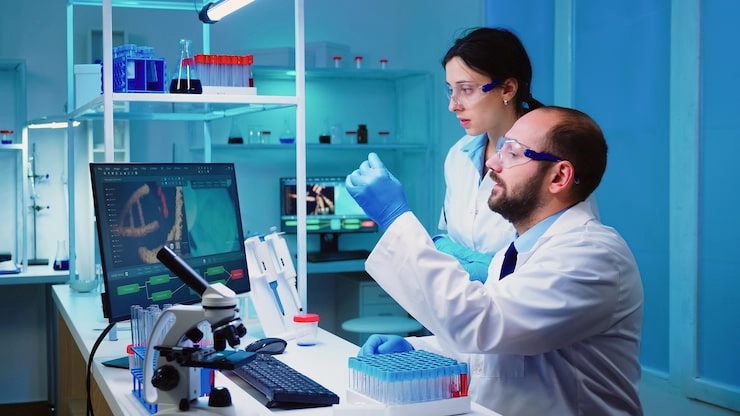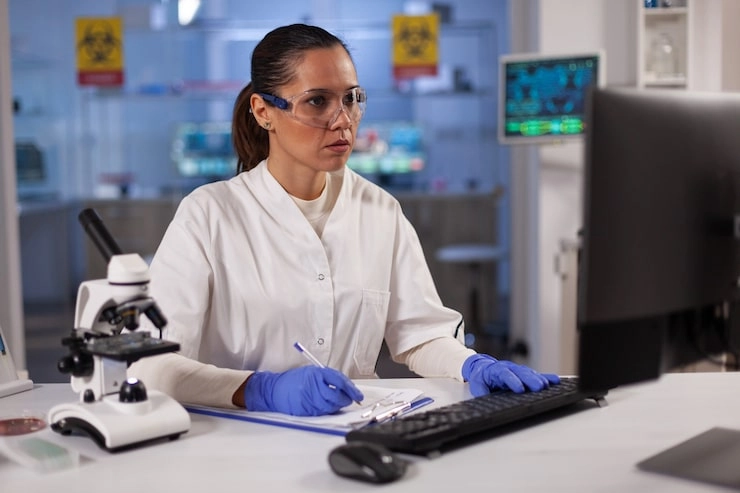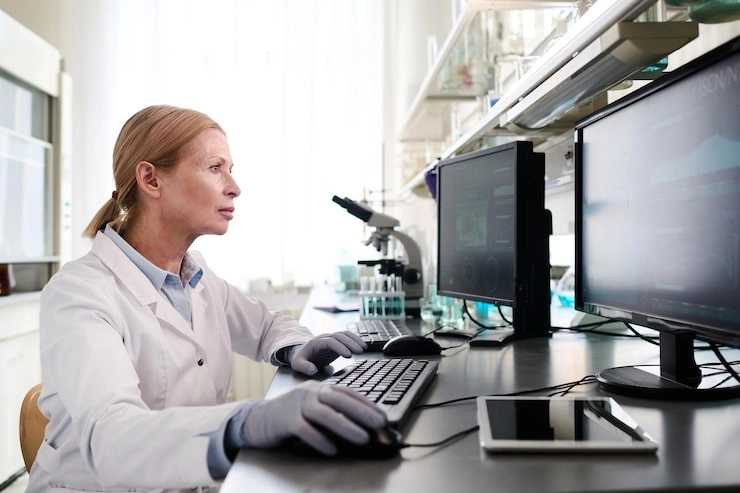
Airborne pollutant and emission analysis is very important in the context of environmental monitoring, as well as industrial compliance and public health assessments. Among the various available analytical techniques for the detection of gaseous species, GSC is a really effective method for the separation and identification of gaseous compounds. It is a precise technique with a large number of applications, and thus, GSC is widely applied in environmental analysis with minimal sample preparation to find trace levels of pollutants.
Overview of Gas-Solid Chromatography in Environmental Analysis
The importance of gas-solid chromatography, GSC, has grown steadily. Applications range from detection of atmospheric and industrial gaseous emissions to offering high selectivity and great durability.
Definition and Principle of Gas-Solid Chromatography
Gas-solid chromatography is a specific type of gas chromatography. Separation is based on adsorption interactions. These occur between analyte molecules and a solid stationary phase. This solid phase generally includes adsorbents such as activated carbon, molecular sieves, or porous polymers. The mobile phase is an inert carrier gas, such as helium or nitrogen.
In this process, compounds get separated. This is based on their different affinities to the stationary phase. The stronger the interaction between a compound and the solid surface, the longer it will be held in the column before it is detected.
Comparison with Other Chromatographic Techniques
While it is similar to gas-liquid chromatography (GLC) in using a gaseous mobile phase, GSC is fundamentally different. It employs a solid stationary phase instead of a liquid one. This key difference gives it unique selectivity advantages. First of all, GSC is especially good for separating permanent gases (like O₂, CO₂) and volatile organic compounds (VOCs). These often interact more strongly with solid adsorbents than with liquid films.
Besides, GSC columns are usually more thermally stable. They are also reusable. This better thermal resilience allows for high-temperature operations without hurting the stationary phase, unlike GLC columns which can suffer from stationary phase degradation, a problem known as column bleed.
Key Advantages of Gas-Solid Chromatography in Pollutant Analysis
The growing interest in gas-solid chromatography comes from its ability to offer specific advantages. These improve accuracy. They also boost efficiency and cost-effectiveness in environmental analysis.
High Selectivity for Inorganic Gases and Light Hydrocarbons
GSC shows excellent resolution when analyzing low molecular weight compounds. Examples include CO, CO₂, CH₄, NOx, and light hydrocarbons. These gases often need very selective techniques because their physical properties are so similar. GSC’s adsorption-based mechanism allows for a clear difference between polar and non-polar species. This makes it perfect for complex gas matrices.
Superior Stability and Reusability of Stationary Phases
Unlike liquid stationary phases that break down over time or with heat, solid adsorbents in GSC keep their structural integrity through many analysis cycles. This means a longer column lifespan. It also means a reduced need for frequent replacements. These benefits are particularly important in continuous environmental monitoring setups.
Minimal Sample Preparation Requirements
Gas-solid chromatography supports the direct injection of gaseous samples. It requires little to no preprocessing. This simple fact minimizes handling errors and allows for faster throughput in both field-based and lab-based settings. Sample introduction systems, such as headspace samplers or direct gas injection ports, further streamline the entire workflow.
Rapid Analytical Throughput for Continuous Monitoring
GSC offers near-real-time analytical capabilities. This is thanks to short retention times and fast column equilibration. Thus, it is highly suitable for applications like stack emission testing or ambient air quality monitoring where getting data on time is critical.
Applications in Monitoring Gaseous Pollutants and Emissions
GSC serves as a foundational technique. It is used across a wide range of environmental monitoring situations. Its adaptability allows for integration into mobile units, laboratory systems, or permanent monitoring stations.
Industrial Emission Control and Compliance Testing
Industrial plants use GSC to find regulated pollutants. These include CO, NOx, SO₂, and VOCs released from combustion sources and chemical processes. The high sensitivity and selectivity of the method help them meet compliance rules set by regulatory bodies like the EPA or EU directives.
Urban Air Quality Assessment
GSC allows for a detailed profiling of urban atmospheres. It does this by measuring ozone precursors (NOx and VOCs), carbon monoxide, sulfur dioxide, and other pollutants. The data gathered can then support environmental policy development. It can also help with pollution source identification and public health studies.
Indoor Air Pollution Detection
Indoor spaces can contain dangerous VOCs. They are released from cleaning products, construction materials, or industrial work. GSC helps identify these contaminants at very low levels, which provides valuable information for occupational safety assessments and regulatory compliance.
Instrumentation Features Enhancing GSC Performance
The performance of gas-solid chromatography depends a lot on the design of its parts. The columns and detectors are especially important.
Column Design and Selection Criteria for Optimal Separation
The choice of column affects resolution, speed, and selectivity in GSC analyses.
Types of Columns Used in GSC
While it has been traditionally associated with packed columns—which are valued for their high capacity and ability to hold large surface area adsorbents like silica gel, alumina, or carbon molecular sieves—modern GSC also makes heavy use of Porous Layer Open-Tubular (PLOT) columns. PLOT columns are different. They are characterized by a thin coating of adsorbent particles on the inner wall of a capillary. This allows for much higher separation efficiency, faster analysis times, and better sensitivity relative to packed columns.
Factors Influencing Column Efficiency
Key variables that affect column efficiency include:
- Particle size distribution: Smaller particles give higher resolution.
- Surface chemistry modifications: Customizing adsorbent surfaces improves selectivity for specific compounds.
- Compatibility with temperature programming: This allows for the separation of complex mixtures with different volatilities.
Detector Compatibility with Gas-Solid Chromatography Systems
Detectors play a vital part. They translate separated components into signals that can be read.
Common Detectors Used
- Thermal Conductivity Detector (TCD): Great for general-purpose detection of inorganic gases.
- Flame Ionization Detector (FID): Very sensitive to hydrocarbons.
- Electron Capture Detector (ECD): Specializes in finding halogenated compounds.
Integration with Mass Spectrometry (MS)
For even better selectivity and sensitivity, GSC is often paired with mass spectrometry. GC-TQMS (Triple Quadrupole Mass Spectrometry) makes highly sensitive and dependable quantitative analysis possible. This is true even for samples that contain a large number of matrices. Quantitative analysis is achievable by creating Extracted Ion Chromatograms (EICs) from data measured by QMS, TQMS, or TOFMS scan modes. This allows for the exact identification and measurement of target components.
Integration with Modern Data Systems
Modern GSC instruments have real-time data acquisition platforms. These allow for automated peak detection. They also support calibration curve generation and result reporting—all are key elements for high-throughput work.
Instrumentation Example: PERSEE Analytical Instruments
The quality of the instrumentation greatly impacts GSC performance. PERSEE is a manufacturer that delivers strong gas chromatographs well-suited to environmental needs.
Company Background and Expertise in Chromatographic Solutions
PERSEE specializes in making reliable analytical instruments. This includes gas chromatographs designed for pollutant monitoring in air, water, and industrial processes. Their modular systems are built for accuracy, speed, and flexibility.
Highlighted Products Relevant to GSC Applications
M7 Series Gas Chromatograph: The M7 series provides a modular platform. It has compatibility with multiple detectors. It is particularly suitable for complex gas mixture analysis because of its customizable configuration options.
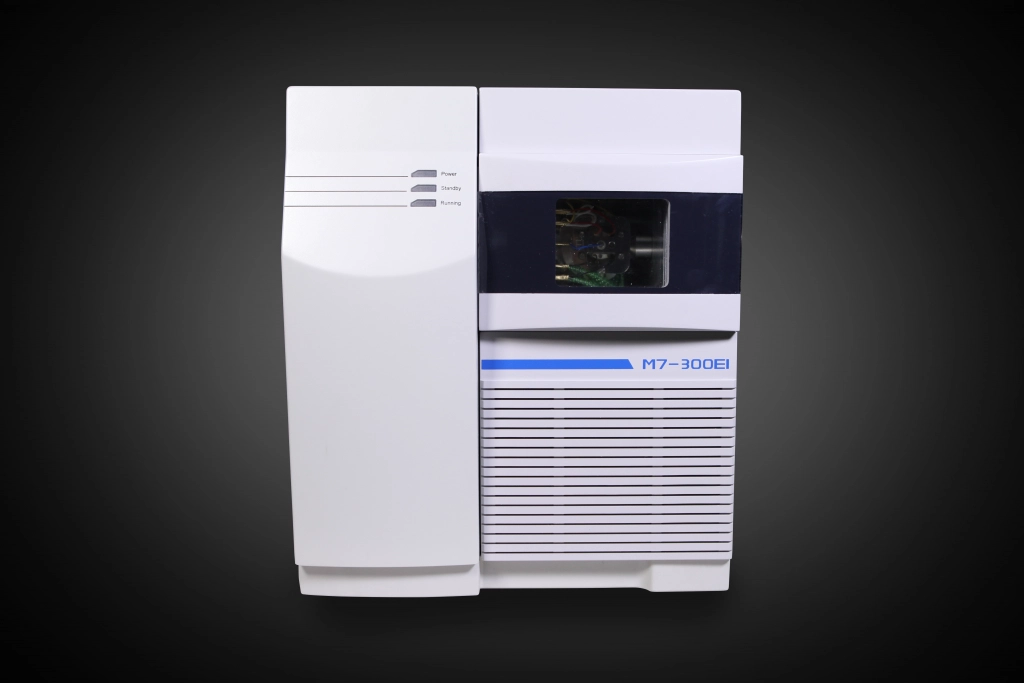
G5GC Gas Chromatograph: The G5GC is compact but powerful. It is designed for lab environments where space is tight but analytical demands are still high. Its high-sensitivity detectors support the trace-level detection needed for air pollution studies.
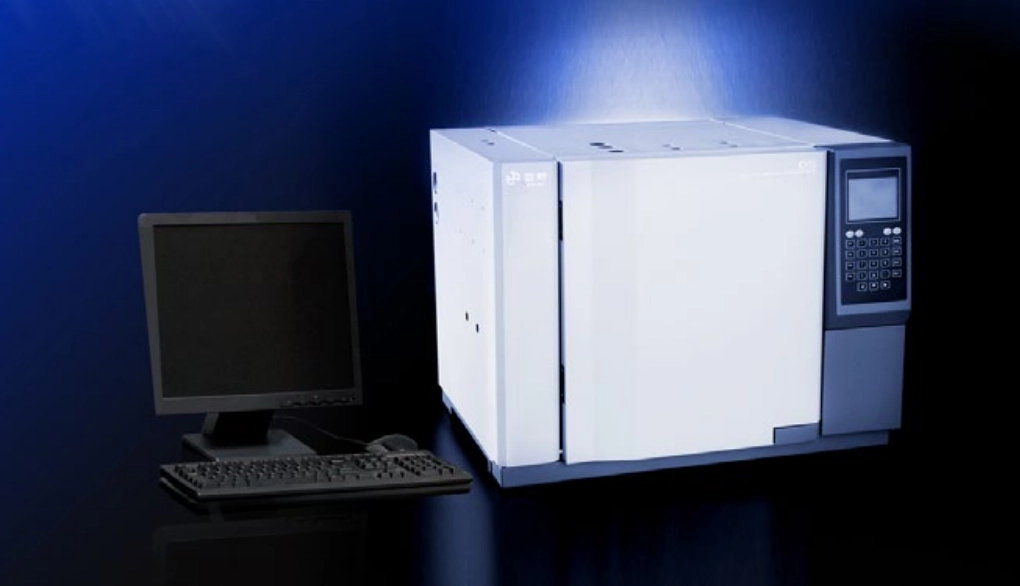
Summary of Advantages in Environmental Analysis Using GSC
Gas-solid chromatography gives unmatched benefits in gaseous pollutant detection:
High selectivity allows for accurate identification of permanent gases and VOCs.
- Solid-phase durability cuts down on maintenance costs.
- Minimal sample preparation makes workflows faster.
- Fast analysis times improve real-time decision-making capabilities.
FAQs:
Q1: What types of pollutants are best analyzed using gas-solid chromatography?
A: The particular cases where GSC is effective include the analysis of permanent gases like CO₂, O₂; light hydrocarbons such as methane; sulfur compounds; and halogenated gases, due to its high selectivity toward these molecules.
Q2: How does gas-solid chromatography differ from gas-liquid chromatography?
A: Both are forms of gas chromatography. However, gas-solid chromatography uses a solid stationary phase that separates analytes based on adsorption interactions. Gas-liquid chromatography depends upon partitioning between a liquid stationary phase and the mobile gas phase.
Q3: Can PERSEE’s instruments be customized for particular pollutant monitoring requirements?
A: Yes, they can. PERSEE offers modular configurations that allow users to choose the right detectors, columns, and accessories. These can be tailored to specific environmental applications or regulatory requirements, such as EPA or EU standards.



